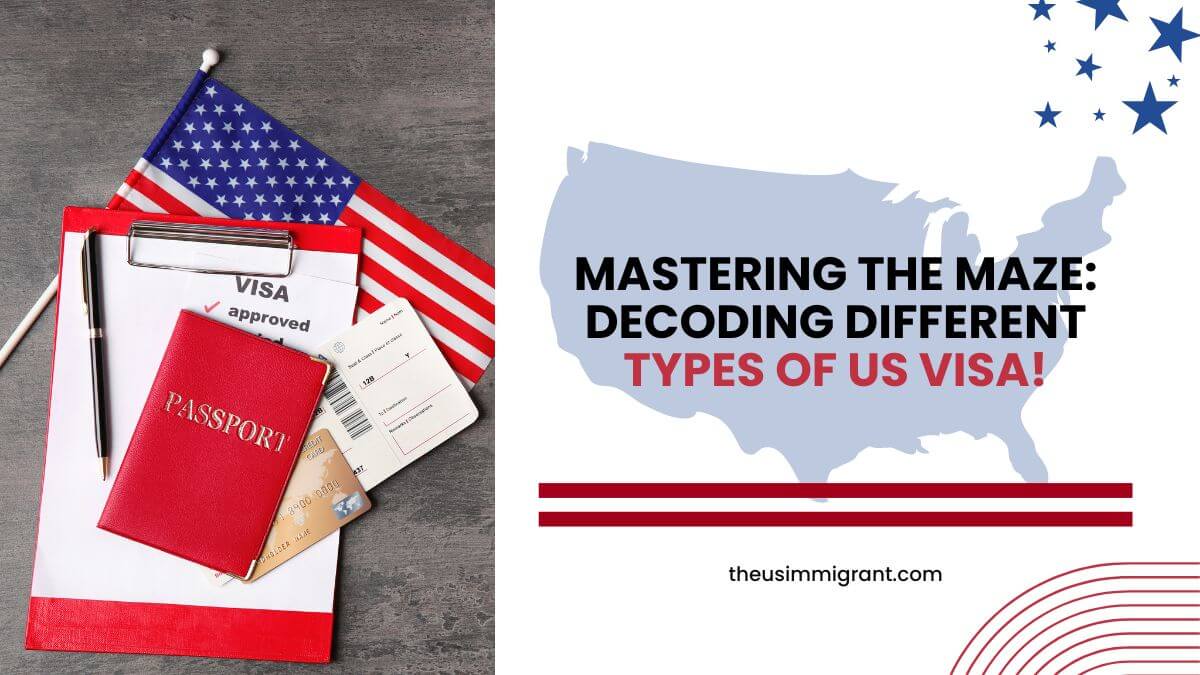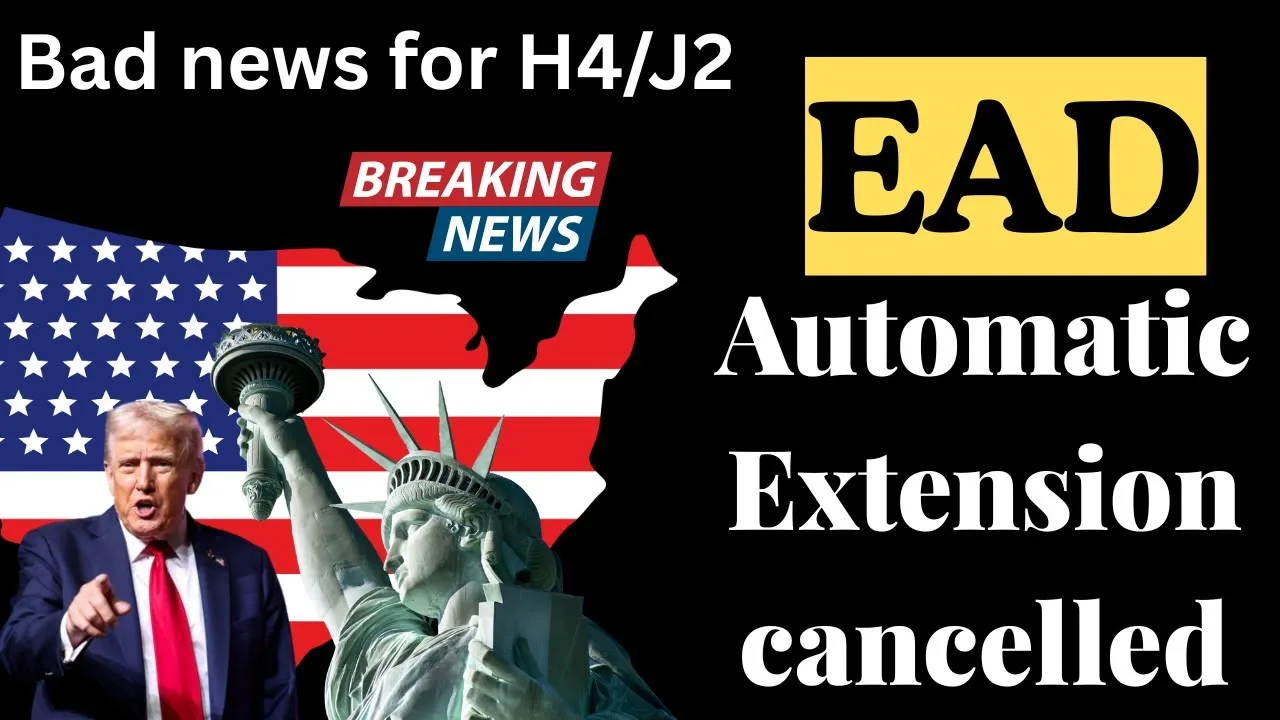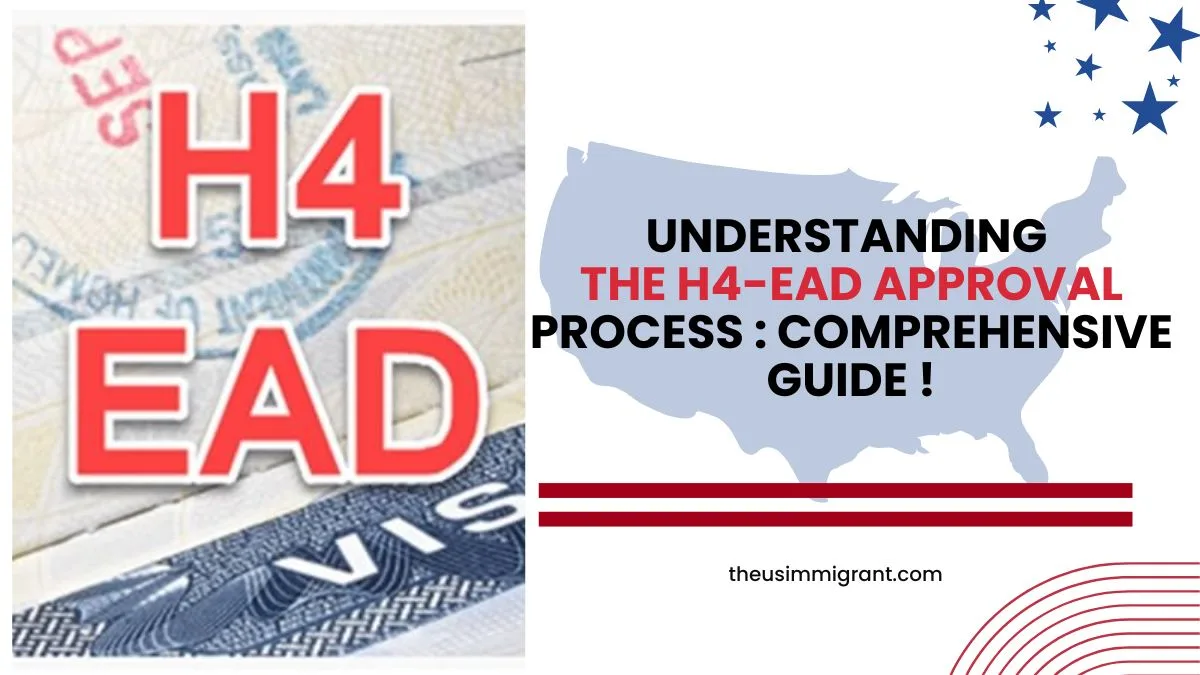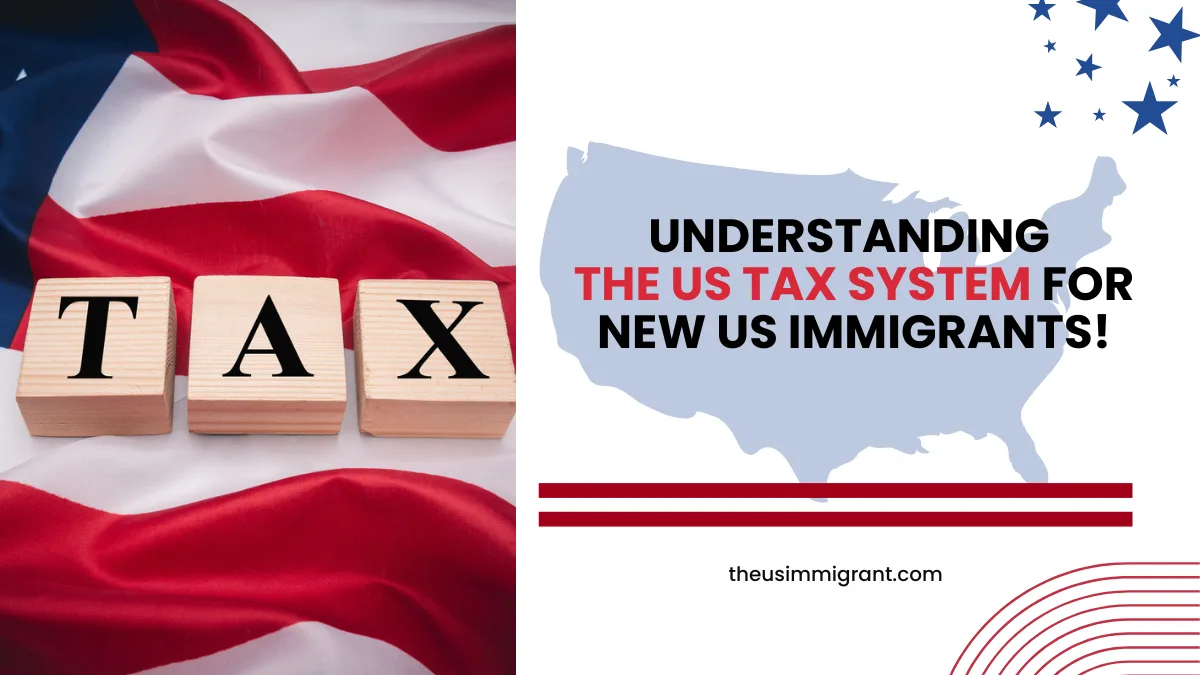Discover the intricacies of a US Immigrant’s life by decoding the types of US Visa puzzles in our captivating post “Mastering the Maze: Decoding Different Types of US Visa.”

Introduction
Just imagine you want to go to the Dream destination of the World – “The United States of America”. It was always a Wishlist to explore the country along with your loved ones after your retirement. But you barely have any idea which tourist US Visa you should apply for.
As one of the most ambitious student in your class, it was your topmost goal to move to the United States for higher education. But unfortunately, you have no clue which type of Student Visa you should apply for.
After achieving high on your corporate targets in your home country, you have an aspiration to go & explore corporate life in the United States. But you are a bit confused about which working Visa you should apply for.
But don’t worry, here you are going to get answers to all of the above and additional questions on what are the different types of us visa’s one should apply for their specific need/requirement.
You have figured that navigating the complex world of US visas can feel like finding your way through a maze. With numerous routes to explore and dead ends to avoid, understanding the significance and varieties of US visas is crucial for anyone looking to visit, work, study, or live in the United States.
Setting the Stage: The Significance of US Visa
A US visa is the key to entering one of the world’s leading nations — a country known for its diverse culture, robust economy, and opportunities for personal and professional development. Obtaining the right visa is the first step in unlocking these opportunities.
Navigating the Visa Landscape: A Brief Overview
The US visa system is designed to categorize entrants based on their purpose of visit. From tourists to students, business professionals to families looking to reunite, there’s a specific visa for each.

Understanding the Basics
What is a Visa?
Simply put, a visa is an endorsement on a passport indicating that the holder is allowed to enter, leave, or stay for a specified period in a country.
Why different types of us visa ?
Due to the varied reasons people travel to the US, different visas ensure that each visitor is properly categorized, meets specific requirements, and follows the stipulated guidelines.
The Legal Framework: Basis of US Immigration Law
US immigration law is complex and governs who can enter, how long they can stay, and what they can do while in the country. It’s based on principles like reunification of families, admitting immigrants with skills beneficial to the economy, protecting refugees, and promoting diversity.
The Visa Spectrum: What are the different types of US Visa?
What is an Immigrant Visa?
- Family-Sponsored Visas: These family-sponsored visas are for spouses and children (F1) and siblings (F4) visas, allowing them for family reunification with their extended families who are already staying in the United States.
- Employment-Based Visas: Like the EB-1 for priority workers and the EB-5 for immigrant investors willing to invest in the US economy.
What is a Non-Immigrant Visa?
The list is big in this non-immigrant category, but we will cover all the major US Visa types that are used by various individuals across the globe based on their precise needs/requirements.
What is B1/B2 Visa?
- Business (B-1) Visa: Individuals who plan to visit the US for their business activities, may it be attending a business conference, attending a business meeting, etc make use of a Business (B-1) visa.
- Tourist (B-2) Visa: Individuals who intend to visit the US to spend some quality time with their loved ones, explore the beauty of the US, or undergo some medical treatment make use of the B-2

What is F1 Visa?
Student (F-1) Visa: Individuals/Students who want to explore higher education in the United States & want to stay as an international student with an approved academic institution, make use of the US Student Visa (F-1)
What is H-1B Visa?
Work (H-1B) Visa: An Individual/Foreign worker, whose employers want to temporarily hire them in specialty occupations which allow them to stay in the US as per their working visa USA tenure, make use of H-1B Visa.
What is L1 Visa?
Work (L-1A and L-1B) Visa: An Individual/Foreign worker, who works on a managerial level or who has specialized knowledge – makes use of an L-1A and L-1B working visa where their employers do an intracompany transfer to move & work in the United States.
Decoding Non-Immigrant Visas
Purpose and Limitations
Each non-immigrant visa serves a specific purpose, from tourism to temporary work, and comes with its own set of limitations such as the length of stay and work rights.
Application Process: From Petition to Approval
The application process can vary greatly depending on the visa type. Generally, it involves submitting a petition, attending an interview, and waiting for approval.
Common Misconceptions: Debunking Visa Myths
There are many myths surrounding US visas, such as the idea that buying property in the US guarantees a visa or that there is a visa that allows anyone to work in any job. These are not true.
Exploring Immigrant Visas
Pathways to Permanent Residency
Immigrant visas are the path to permanent residency, popularly known as getting a Green Card. The journey can originate from family sponsorship, employment opportunities, or other unique avenues like the Diversity Visa Program.
Family Reunification vs. Employment Opportunities
While some prefer to migrate for family reunification and would want to get their families by doing green card applications for parents, spouse or their close family members, others might find the employment-based route more suitable, aiming to fill positions that require specific skills in the US labor market.
Diversity Visa Program: A Unique Immigration Avenue
The Diversity Visa Program, also known as the Green Card lottery, is a unique opportunity for individuals from countries with low rates of immigration to the US to obtain a visa.

The Visa Application Process
Navigating the Forms: DS-160, I-129, I-485, and More
From online applications like DS-160 for non-immigrant visas to I-485 for adjusting your status to a permanent resident, the paperwork can be daunting but is a critical step in the visa process.
Documentation: What You Need to Prepare
Applicants need to prepare a range of documents from passports, application forms, photos, and sometimes evidence of financial stability or a job offer from a US employer.
Interview Process: Dos and Don’ts
Preparing for the visa interview involves understanding the type of questions that might be asked, dressing appropriately, and being honest and clear with your answers.
Challenges and Complexities
Visa Denials: Common Reasons and How to Overcome
Visa applications can be denied for a variety of reasons including incomplete applications, lack of evidence, or not qualifying for the visa category.
Legal Assistance: The Role of Immigration Attorneys
Navigating the complexities of US immigration law can often require the expertise of an immigration attorney, especially in cases of appeal or addressing inadmissibility.
Policy Changes: Staying Informed in a Dynamic Landscape
US immigration policy is dynamic, and changes can impact visa laws and applications. Staying informed through official sources is crucial.

Conclusion
Mastering the maze of US visas is a journey of understanding, preparation, and navigating through complexities.
With the right knowledge and resources, your visa journey can be less daunting and more empowering.
Remember, every maze has an exit, and with persistence, guidance, and a clear understanding of the rules, you can find your path through the US visa landscape.
For ongoing learning and support, always refer to official resources and consider professional legal advice where necessary.
FAQs
Q: Why are there different types of visas?
Ans: Different visas cater to various reasons for crossing borders. Whether you’re exploring, studying, working, or reuniting with family, the variety of visas ensures everyone finds the right fit.
Q: Can you explain the legal framework behind US immigration law?
Ans: The legal framework is the backbone, shaping the rules and regulations governing immigration. Understanding this basis is fundamental to navigating the intricacies of the system.
Q: What’s the difference between non-immigrant and immigrant visas?
Ans: Non-immigrant visas are for temporary stays, like tourism or work assignments. Immigrant visas, on the other hand, pave the way for permanent residency, either through family ties or employment opportunities.
Q: How does the EB-1 visa cater to priority workers?
Ans: The EB-1 visa is tailored for individuals with extraordinary abilities or those recognized as outstanding in their field. Priority workers find their niche in this exclusive category.
Q: How can I empower my visa journey after reading this blog?
Ans: The conclusion, “Mastering the Maze,” offers key takeaways to empower your visa journey. It’s a culmination of insights to equip you for a successful navigation through the visa maze.




